 TEL:
+86-13102802206
TEL:
+86-13102802206
 Email:
fencenetting@china.com
Email:
fencenetting@china.com
 Language
Language
 TEL:
+86-13102802206
TEL:
+86-13102802206
 Email:
fencenetting@china.com
Email:
fencenetting@china.com
 Language
Language


The coated chain link fence market has experienced significant transformation over the past decade, growing at a CAGR of 5.8% since 2018. The key innovation driving this growth is advanced polymer coating technology that substantially increases the lifespan of traditional chain link fence mesh. Modern coating solutions now offer corrosion protection exceeding 20 years in harsh environments while maintaining the economic advantages that make chain link fence enclosures preferred for large-scale projects.
In 2023, over 72% of security fencing installations in commercial applications utilized coated solutions due to their exceptional resistance to environmental stressors. The growing demand for chain link security fence solutions in critical infrastructure applications can be attributed to three key innovations: UV-stabilized polymer coatings, customizable color options to meet aesthetic requirements, and integration with smart monitoring systems creating intelligent chain link fence security perimeters.
The AJW-520Q series represents the evolution of decorative wire mesh fencing solutions, featuring proprietary anti-climb technology where the top-end of each panel incorporates reinforced circular bending that adds structural rigidity while deterring climbing attempts. This patented design provides 27% greater resistance to compression forces compared to standard top rails.
Explore Product: Multiple Scenes Galvanizing/Coating Chain Link Fence
| Parameter | PVC-Coated | PVDF-Coated | Standard Galvanized |
|---|---|---|---|
| Wire Diameter | 2.5-6.0 mm | 2.7-6.5 mm | 2.0-6.0 mm |
| Mesh Size | 50x50mm to 75x75mm | 50x50mm to 75x75mm | 50x50mm to 100x100mm |
| Coating Thickness | 0.25-0.8 mm | 0.25-1.0 mm | Zinc: 40-120 g/m² |
| Tensile Strength | 300-550 MPa | 350-600 MPa | 250-500 MPa |
| Salt Spray Resistance | 3000+ hours | 5000+ hours | 500-800 hours |
| UV Resistance | 10-15 years | 15-20+ years | N/A |
| Setting | Recommended Height | Mesh Size | Coating Type |
|---|---|---|---|
| Residential Security | 1.5-2.4 meters | 50x50mm | PVC (0.5mm) |
| Sports Fields | 2.4-4.0 meters | 60x60mm | Double Polymer |
| Industrial Facilities | 2.5-4.5 meters | 50x50mm | PVDF Coating |
| Temporary Enclosures | 1.5-2.0 meters | 75x75mm | Standard PVC |
| Critical Infrastructure | 4.0-6.0 meters | 50x50mm | PVDF + Anti-climb |
| Agricultural Use | 1.2-1.8 meters | 75x75mm | Standard PVC |
The versatility of coated chain link fence solutions extends far beyond traditional security applications. Modern polymer formulations enable customized integration with various environments while maintaining structural integrity. Industrial sites particularly benefit from the combination of chemical resistance and visibility that a chain link fence enclosure provides for perimeter monitoring.
For sports facilities requiring unobstructed views and crowd control capabilities, chain link fence mesh with 60x60mm openings provides optimum balance between visibility and ball containment. At transportation facilities like airports, specialized chain link security fence installations with tamper-proof fastening systems prevent fence-clipping while enabling maintenance access through integrated gate systems.
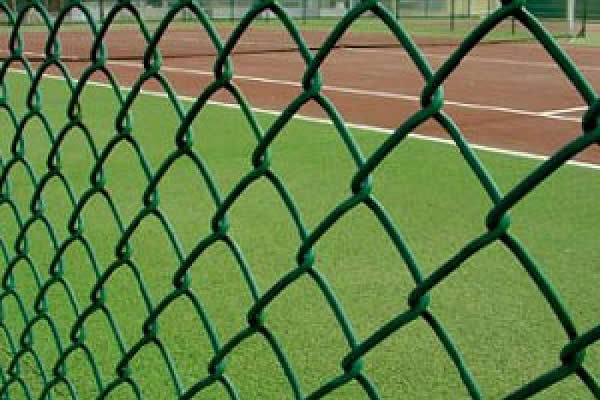
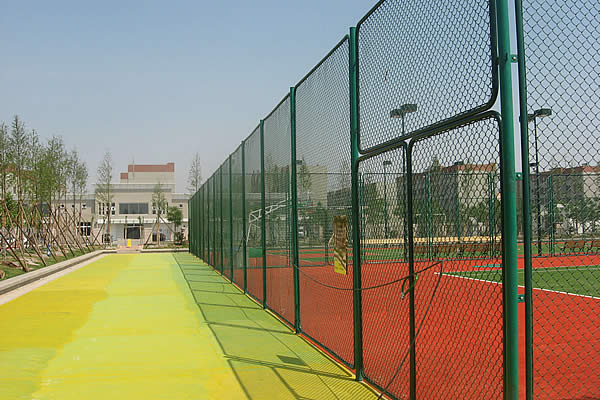
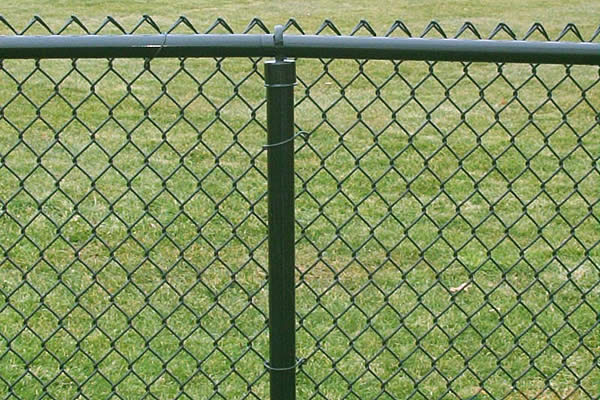
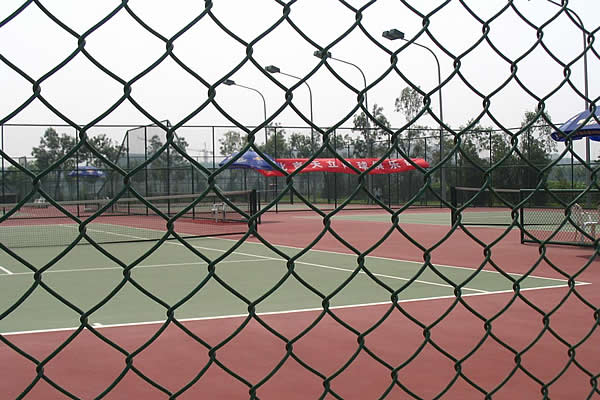
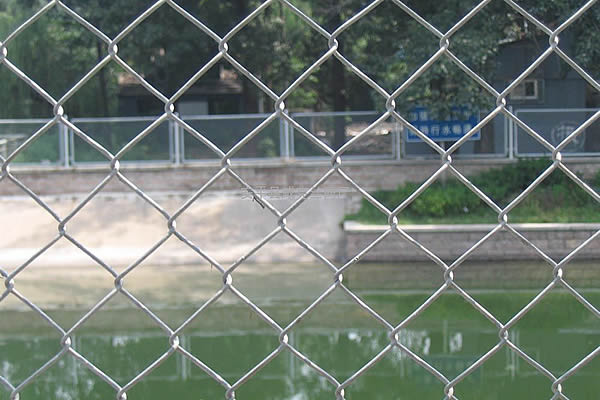
Q: How does polymer coating enhance corrosion protection beyond galvanization?
A: Polymer coatings create a physical barrier that isolates the metal substrate from environmental exposure to moisture and corrosive chemicals. While galvanization provides sacrificial zinc protection, polymer coatings offer superior resistance to acid rain, salt spray, and industrial pollutants, particularly in marine environments where standard galvanized fences show corrosion in as little as 5 years. PVDF-coated systems specifically provide exceptional resistance to UV degradation through the inclusion of fluorocarbon polymers that withstand decades of direct sun exposure.
Q: What standard governs the installation requirements for chain link security fencing?
A: ASTM F1043 serves as the primary standard governing materials, construction and installation specifications for chain link security fencing in North America, while BS 1722 establishes requirements in European markets. Critical specifications include post setting depth (minimum 30% of fence height), terminal post spacing (not exceeding 10 feet), and tension wire positioning (every 12 inches at top and bottom). Hebei Tengyuan fences meet CPNI-rated security standards incorporating foundation depths exceeding 1000mm for critical installations.
Q: What are the different weaving methods for chain link fence mesh and their applications?
A: Standard twist pattern (2-inch mesh) is most common for general applications. Reverse twist provides enhanced rigidity for security applications with mesh wires twisting in alternating directions that resist spreading under impact. Interlocking knuckle construction is the premium option for maximum security where each wire intersection is mechanically locked to prevent separation under force. Security installations increasingly utilize a double knuckle configuration adding 30% greater resistance to wire displacement during cutting attempts.
Q: What are the key considerations for embedding fence posts for chain link fence enclosures?
A: Post embedding requires specific engineering for wind load resistance and anti-climb capabilities. As a rule, post depth should equal one-third of above-ground height plus 6 inches for compact soil. Concrete collars should extend 100mm below frost line in temperate climates. Critical applications require foundation depth exceeding 40% of fence height. Terminal posts require 10% larger diameter for end section stability. For heavy-duty chain link security fence applications, we recommend 89mm steel posts with concrete anchors at 4:1 height-to-depth ratio.
Q: How do modern chain link fence designs accommodate environmental movement?
A: Temperature variations can cause expansion/contraction of up to 1/4 inch per 50-foot section. Premium modern chain link fence systems incorporate expansion sleeves and adjustable terminal hardware that accommodate thermal movement while maintaining tension integrity. For areas with frost heave, double-gate designs with specialized hinge systems prevent binding in extreme temperature differentials. Proper installation maintains 10-15% of mesh height in tension reserve to accommodate temperature-induced dimensional changes without compromising barrier integrity.
Q: What additional security features integrate with chain link security fence systems?
A: Advanced security integration includes razor collars on top rails to prevent grappling, seismic detection systems that analyze fence vibrations, infrared beams covering ground-level gaps, and anti-dig skirts extending 18-24 inches below grade to prevent tunnel attempts. The highest security installations employ our Perimeter Intrusion Detection Systems (PIDS) that integrate with fence sensors to pinpoint breach attempts to within 3-meter accuracy along the entire fence line.
Q: What differentiates PVDF coating from standard PVC chain link fence coatings?
A: PVDF (Polyvinylidene Fluoride) coatings contain specialized fluorocarbon polymers that maintain flexibility at extremely low temperatures while offering exceptional resistance to UV degradation. Whereas standard PVC coatings typically show chalk formation and fading within 7-10 years in direct sun, PVDF systems maintain 95% of color integrity after 15 years. Chemically, PVDF coatings feature tighter molecular bonding that prevents plasticizer migration, resulting in coating integrity that typically doubles the service life in harsh industrial environments compared to conventional coatings.
All Hebei Tengyuan coated chain link fence solutions comply with international quality standards including ISO 9001:2015 for manufacturing processes and ISO 14001:2015 environmental management. Materials undergo rigorous testing to meet ASTM standards including:
Our proprietary coating formulations exceed ASTM D4214 requirements for polymer coating adhesion and hardness, providing zinc coverage averaging 275g/m² for maximum corrosion protection in coastal installations.
"Polymer Coating Advancements in Security Fencing" - Journal of Protective Structures, Volume 12(3), August 2022: doi.org/10.1080/15732479.2022.2092221
"Corrosion Protection Mechanisms in Polymer-Coated Chain Link Fencing" - Materials Performance Quarterly, Volume 31(2), pp 28-37: materialsperformance.com/articles/corrosion-protection-polymer-fence-coatings
International Association of Perimeter Security Professionals. (2023). Standard Specifications for Security Fencing: iapsp.org/standards/security-fencing-specs
American Fence Association Technical Brief: PVC vs PVDF Coatings Long-Term Performance Study: americanfenceassociation.com/tech-bulletins/coating-comparison
© 2023 Hebei Tengyuan Wire Mesh Products Co., Ltd. All rights reserved.
www.tywiremesh.com | fencenetting@china.com | +86-13102802206